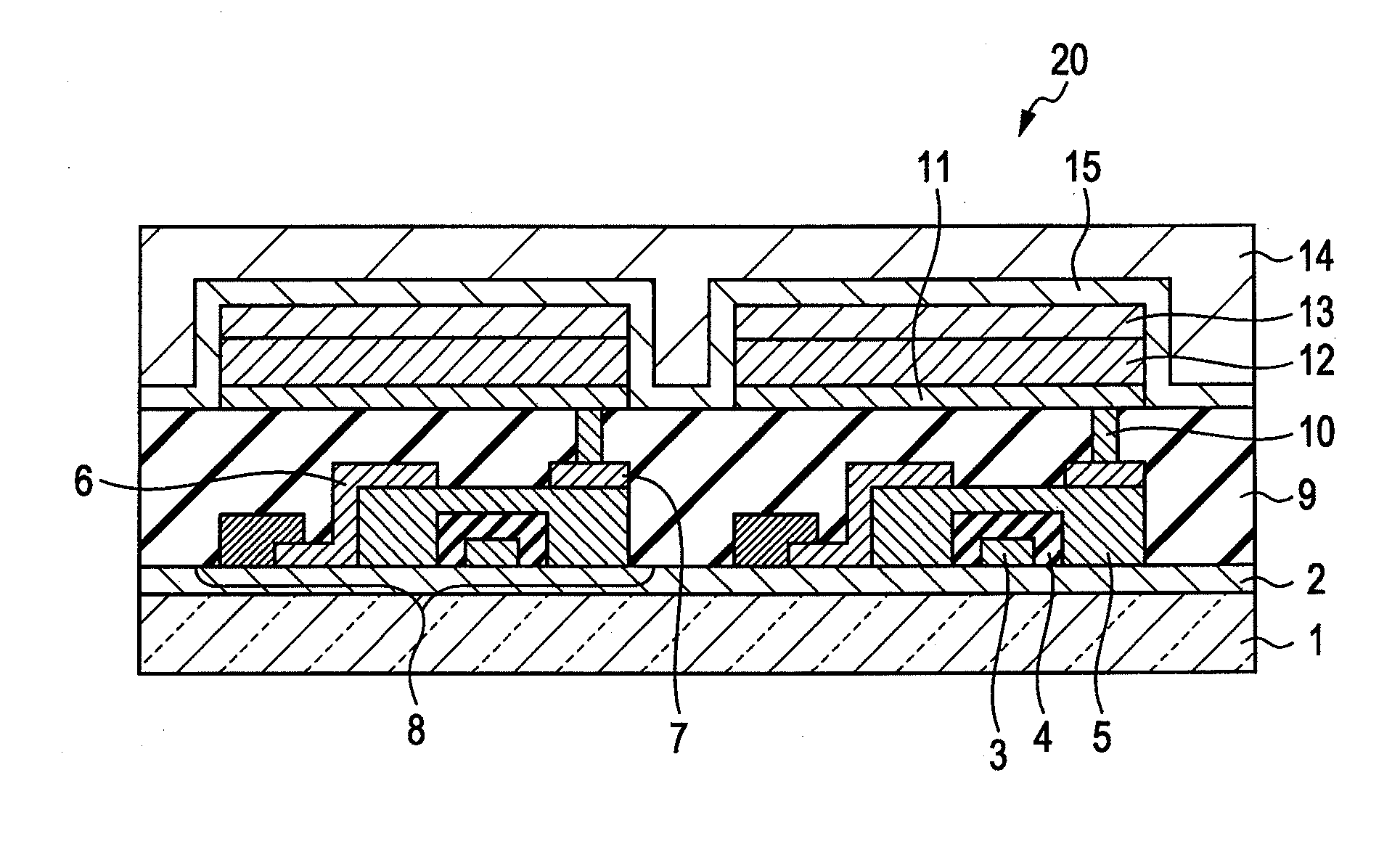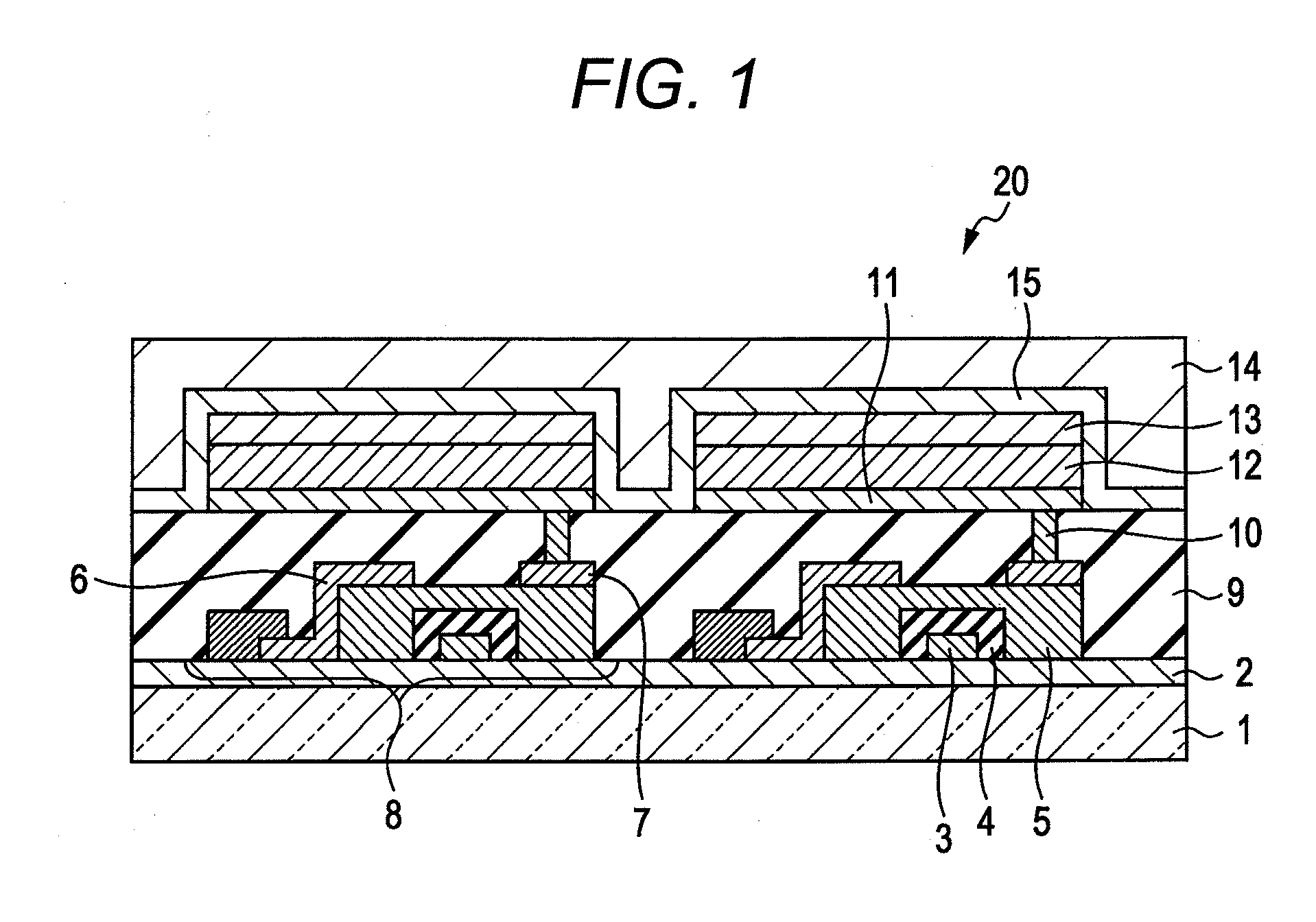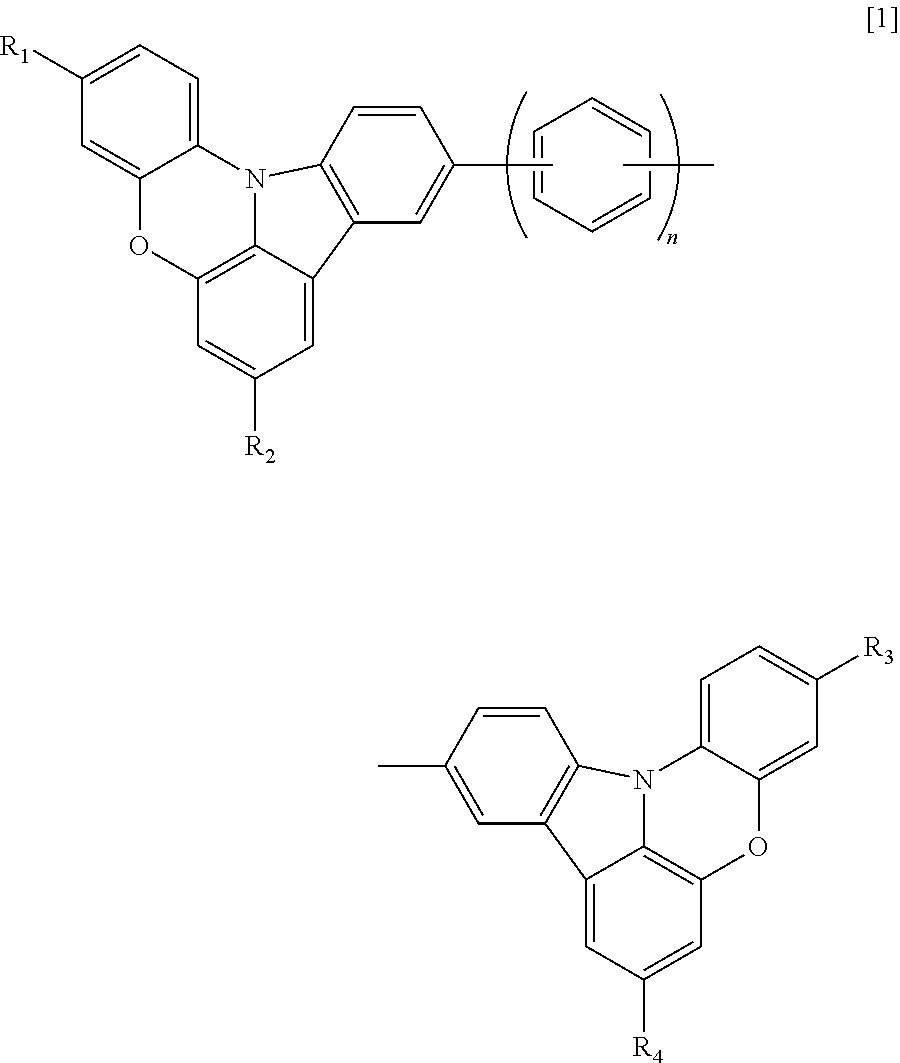Indolophenoxazine compound and organic light emitting device using the same
a technology of indolophenoxazine and compound, which is applied in the direction of organic semiconductor devices, thermoelectric devices, organic chemistry, etc., can solve the problems of small bond energy of carbon-nitrogen bonds and low chemical stability, and achieve high chemical stability, excellent driving durability, and high emission efficiency
- Summary
- Abstract
- Description
- Claims
- Application Information
AI Technical Summary
Benefits of technology
Problems solved by technology
Method used
Image
Examples
example 1
Synthesis of Exemplified Compound IP101
[0093]
[0094](1) Synthesis of Intermediate IP-OMe
[0095]The following reagents and solvent were loaded into a 300-mL recovery flask.
[0096]Phenoxazine: 8.00 g (43.7 mmol)
[0097]4-Bromo-3-chloroanisole: 9.21 g (41.6 mmol)
[0098]Tris(dibenzylidene)bispalladium: 1.14 g (1.25 mmol)
[0099]Tri-tert-butylphosphine: 0.76 g (3.76 mmol)
[0100]tert-Butoxysodium: 5.99 g (62.4 mmol)
[0101]Toluene: 160 mL
[0102]Next, the reaction solution was heated at 75° C. for 2 hours with stirring under nitrogen. After the completion of the reaction, the reaction solution was washed with water, dried over sodium sulfate, and then concentrated under reduced pressure to give a crude product. Next, the resultant crude product was purified by silica gel column chromatography (eluent: heptane / toluene=4 / 1) to afford 7.60 g of 10-(2-chloro-4-methoxyphenyl)phenoxazine (yield: 57%).
[0103]Subsequently, the following reagents were loaded into a 300-mL recovery flask, and gas in the recovery...
example 2
Synthesis of Exemplified Compound IP201
[0145]
[0146]The following reagents and solvents were loaded into a 200-mL recovery flask.
[0147]1,4-Dibromobenzene: 358 mg (1.52 mmol)
[0148]IP-Bpin: 1.22 g (3.19 mmol)
[0149]Tetrakis(triphenylphosphine)palladium(0): 88 mg (76 μmol)
[0150]Toluene: 30 mL
[0151]Ethanol: 15 mL
[0152]10-wt % aqueous solution of sodium carbonate: 15 mL
[0153]Next, the reaction solution was refluxed with heating for 3 hours with stirring under nitrogen. After the completion of the reaction, water was added to the reaction solution, the mixture was stirred, and the precipitated crystal was separated by filtration. Next, the crystal was successively washed with water, ethanol, and acetone to give a crude product. Next, the resultant crude product was dissolved with heating in o-dichlorobenzene and then subjected to hot filtration, followed by recrystallization from an o-dichlorobenzene solvent. Next, the resultant crystal was dried in vacuo at 150° C. and then subjected to su...
example 3
Synthesis of Exemplified Compound IP202
[0159]
[0160](1) Synthesis of DMIP-Bpin
[0161]An intermediate 3,7-dimethyl-10-(4,4,5,5-tetramethyl-1,3,2-dioxaborolan-2-yl)indolophenoxazine (DMIP-Bpin) was synthesized by the same method as in Example 1 (1) and (2) except that 3,7-dimethylphenoxazine was used in place of phenoxazine in Example 1(1).
[0162](2) Synthesis of Exemplified Compound IP202
[0163]The following reagents and solvents were loaded into a 50-mL recovery flask.
[0164]1,4-Dibromobenzene: 137 mg (0.581 mol)
[0165]DMIP-Bpin: 500 mg (1.22 mmol)
[0166]Tetrakis(triphenylphosphine)palladium(0): 33 mg (29 μmol)
[0167]Toluene: 12 mL
[0168]Ethanol: 6 mL
[0169]10-wt % aqueous solution of sodium carbonate: 6 mL
[0170]Next, the reaction solution was refluxed with heating for 5 hours with stirring under nitrogen. After the completion of the reaction, water was added to the reaction solution, the mixture was stirred, and the precipitated crystal was separated by filtration. The crystal was then succe...
PUM
 Login to View More
Login to View More Abstract
Description
Claims
Application Information
 Login to View More
Login to View More - R&D
- Intellectual Property
- Life Sciences
- Materials
- Tech Scout
- Unparalleled Data Quality
- Higher Quality Content
- 60% Fewer Hallucinations
Browse by: Latest US Patents, China's latest patents, Technical Efficacy Thesaurus, Application Domain, Technology Topic, Popular Technical Reports.
© 2025 PatSnap. All rights reserved.Legal|Privacy policy|Modern Slavery Act Transparency Statement|Sitemap|About US| Contact US: help@patsnap.com



